It’s not just sales that are soaring at Aldi. Its range is growing fast too. So can you now do a full weekly shop at Aldi? And if so, what’s the saving? We paid a visit to find out. Then met UK bosses Matthew Barnes and Roman Heini to discuss our findings
Aldi doesn’t do interviews. Perhaps with good reason. Paul Foley, the last Aldi boss to drop his guard, was fired within months, despite Aldi’s strong showing at the start of the recession. And through the subsequent turmoil, and Aldi’s ultimate return to barnstorming form, UK management has reverted to type, following the mantra of its famously publicity-shy founders, Karl and Theo Albrecht.
So we were delighted when joint group MDs Matthew Barnes and Roman Heini invited us to its head offices in Atherstone for a rare interview. “It’s an unusual move for us,” admits Barnes. “It’s the first time we’ve done this.”
On the other hand, why wouldn’t they want to talk about the show-stopping results announced this week - turning a pre-tax loss of £56.9m in 2010 into a £70.5m profit in 2011, growing sales by 27% to £2.76bn, and increasing share by 0.5% to 2.9% [Kantar Worldpanel].
“We have no distracting promotions, we have predictable prices week-on-week and we EDLP the brands, too”
But Barnes and Heini aren’t merely interested in crowing about results. They want to explain the dramatic changes in Aldi since Foley’s shock departure in August 2009, and to dispel the “outdated and inaccurate” perception of Aldi as a chain of soulless sheds filled with ambient Continental goods, where endless queues form behind cash-only tills.
So how have Barnes and Heini transformed Aldi? Why is it so successful at the moment? Has it not simply benefited from the ‘double dip’ in the economy, whose first slump helped Aldi to heightened prominence at the onset of the recession? Just how cheap is it? And is it now a viable alternative to the mainstream supermarkets, able to support a full shop?
The latest results, impressive as they are, tell only half the story - not least because they are almost a year old. In the meantime, the business continues to motor like a train, as the latest Kantar results confirm, with yet another quarterly sales update of 27%. But the foundations for Aldi’s success were laid out on their arrival, with sourcing and ranging as two of the cornerstones.
Barnes, a UK-born Aldi lifer who was shipped back after a spell in Oz, detected two immediate issues. “We weren’t British enough. Now, two-thirds of our fresh is British. We are becoming a British business with British management and British products.”
German-born Heini takes up the story. “We had to become more British but we also had to make our fresh fresher. We grew our product range by 30% and those extra lines were mainly fresh. We have doubled our meat sales. Chilled sales have almost doubled. fruit and veg are both up over 50%.”
This expansion of the fresh and chilled offer has involved increasing the overall range from 1,000 products to 1,300. But the changes have not been limited to these areas. In a bid to make the overall range “extensive enough and to cover enough demographics”, as Barnes puts it, Aldi has taken another leaf out of the supermarket book, introducing a good, better, best own-label tiering via an ‘Everyday Essentials’ range in January to complement the top tier ‘Specially Selected’ range it unveiled as far back as 2005.
Doesn’t this all add complexity to Aldi’s famously stripped down supply chain? “We still run the simplest retail operation in the British market,” replies Barnes. “Our stores are still the simplest to shop. Yes, if we were still selling a 700-strong long-life range with minimal fresh products it would be even simpler. But that’s not what customers want.
“Our entry-level tier is being redesigned, some of it is being reformulated and it will relaunch in three weeks. The middle tier will always be the core of our business. And Specially Selected is up 50% year-on-year.”
Some might suggest this continued evolution towards a mainstream UK supermarket offering is playing into the hands of the major multiples. But in fact Barnes suggests Aldi is becoming “increasingly unique.” Heini agrees: “We have no distracting promotions, we have predictable prices week-on-week and we EDLP the brands, too.”
Roman Heini snapshot
Born: Donaueschingen, Germany
Age: 36
Educated: Degree in economics
Career: Joined Aldi Germany in 1996 as an area manager before becoming property director for the South East region of the UK, and then country MD responsible for setting up the Swiss Aldi business
Matthew Barnes snapshot
Born: Bath, England
Age: 39
Educated: Studied law at University of Liverpool
Career: Joined Aldi as an area manager in 1997, then store operations director for South West UK, then North West MD in 2002. He transferred to Aldi Australia as MD of corporate buying in 2007, before returning in 2009
Aldi’s strategy isn’t to copy the competition, but that doesn’t mean they can’t learn from their success, says Barnes. Aldi watches, then combines its observations with its own customer research to establish the best way forward. Its next move is indicative: introducing a range of chilled ready meals.
“It’s a £1.2bn market and we have no share of it,” says Barnes. “If we get our market share of ready meals it means good money for us and it will broaden our appeal. We will offer the top 12 selling SKUs in the market at an unbeatable price. The fish pie, the chicken tikka masala, the mashed potato.”
Hold on. Prepared mashed potato at Aldi? What happened to no frills? “Mashed potato is a top 12 selling SKU,” says Heini. “Our strategy is to identify the top 12 selling products and stock them. We are not moving away from a no-frills approach.”
“We weren’t British enough. Now, we are becoming a British business with British management and British products”
Aldi has only conceded a “nice to have” in one area, says Heini, and that’s the introduction of shopping baskets. Even that decision came after lengthy debate. “We were reluctant because they add on costs. But there was no way around it.”
“Customers were screaming for them,” adds Barnes. “It was a big decision,” says Heini. “But we haven’t added anything else. We have evolved in range but we haven’t added complexity and cost.”
If there is an irony in this statement, it’s the fact that Barnes and Heini are joint GMDs. Tesco’s UK CEO, Richard Brasher, said “you can’t have two captains in the team” when he quit Tesco this summer, as global CEO Philip Clarke started throwing his weight around, and that business is 20 times the size. So how does Aldi justify its dual management? And what happens when big decisions put the joint controllers at loggerheads?
“We have some really robust discussions but we always come to an agreement,” says Barnes. “We have different strengths - it’s a fantastically strong position to be in. Either you subscribe to the theory of too many cooks, or you believe that two heads are better than one. We’re like a very functional married couple.”
Heini nods. “One could argue the combination of our history and our skill-sets are a nice completion. We share responsibilities, and ultimate accountability, so there are no splits in departments. It’s very unusual, but Aldi replicates it everywhere. Maybe it takes longer to reach a decision but we strongly believe in the process.”
As ‘lifers’ at Aldi, the ethos has instilled a “huge passion for the company and its concept, and a determination to see the company succeed,” says Barnes. When they took control, he adds, both shared an “in-built frustration that Aldi wasn’t getting the cut through in the UK we felt it could have.”
Now the cut through is self-evident, with the vast majority of its growth achieved without a significant increase in store numbers - after Foley’s plan to open a store a week until Aldi hit 1,500 was kiboshed.
Aldi has also increased sales without a demonstrable increase in customer numbers. As Kantar Worldpanel director Ed Garner says: “Outside of the big four, Aldi continues to be the star performer, driven by dramatic growth in spend levels of existing customers rather than an increased number of shoppers.”
Nonetheless, such dizzying sales growth cannot be sustained indefinitely, Heini concedes. “It’s a function of mathematics that we cannot add sales of 30% for 10 years. Like-for-like sales will slow down. But we will add more stores to attract new shoppers.”
How does Aldi steal ahead?
- Fresh chicken: Aldi is around the same price as Lidl, Sainsbury’s and Tesco, but is 18% cheaper than Asda.
- Instant coffee: Aldi charges the same as Lidl. Both are miles cheaper than entry-level equivalents from the major multiples.
- Garlic bread: The top five supermarkets offer frozen garlic bread for a round pound each. Aldi and Lidl offer it for 65p - 35% less.
- Iceberg lettuce: No, the discounters don’t offer foodie favourite Chinese leaf. But they do offer iceberg - and at 32p Aldi offers it at an unbeatable price.
- Milk: The price of milk is a contentious issue - Aldi and Lidl charge a rock bottom 98p compared with £1 at Asda and £1.18 everywhere else.
- Potatoes: A big bag of potatoes is a fixture in shopping trolleys up and down the UK. Aldi charges just 69p for a 2.5kg bag of own-label baking potatoes.
- White wine: Sales of wine have increased by 90% - and you can see why when you look at the competitive price of this Sauvignon Blanc.
- Tomato purée: A key ingredient in all manner of soups and stews - the average price at the top five is a steady 48p. At Aldi it’s 35p.
Aldi wants to add 40 new stores a year but, says Barnes, finding sites has become a “battleground” as supermarkets focus on small. However, Aldi has expanded its property team to help. “The logical move for us is expansion, but we won’t diversify into complex and costly distractions like e-commerce,” adds Heini.
Past experience has taught them “how quickly you can lose momentum and how hard to gain it is,” adds Barnes. “There’s absolutely no room for complacency.” That includes staying focused on Aldi’s biggest weapon - price. So how cheap are they?
“We have invested significant margin over the last two years in keeping our prices low,” says Barnes. “You might look at these profits and think we have increased our margins to keep prices so low, but don’t think that for a second. It’s the precise opposite. And we have done it in order to regain EDLP as our territory once and for all.”
The Grocer hasn’t simply taken Aldi at its word on this, however. To test its claims, and to further understand Aldi’s growing appeal, we examined Aldi’s offer, using The Grocer 33 mystery shop from 8 September as our guide. The test involved two phases. In the first, if the brands on the list were unavailable at Aldi we substituted them with own label. And if a particular item was unavailable, logical substitutions were made. Our aim here was to determine whether Aldi could fill a trolley with a typical weekly shop - and how the overall experience compares with the top five.
So, armed with my shopping list, I enter the local Aldi, where a display of fresh flowers and a poster advertising that Which? magazine has declared Aldi ‘Best supermarket of 2012’ greets shoppers. A woman pushes a trolley past me, stops and sighs: “I’m in Aldi heaven.”
Staff look focused, rapidly restocking shelves. I ask one if they sell garlic bread slices and she directs me to the chilled section with one hand while filling freezers with the other. I interrupt again to ask about soup. She is polite, but there’s an undercurrent of needing to get back to the task in hand. Cardboard boxes are piling up in some places on the shop floor.
I can get Minstrels, Jammie Dodgers and Kingsmill bread. The remaining nine brands on the list - Carte d’Or, Cillit Bang, Goodfella’s, Hardy’s, Herbal Essences, Innocent, McCoy’s, New Covent Garden and Philadelphia - I swap for own label. I also have to make nine substitutions: I can’t buy coconut or physalis, for example, so I choose kiwi fruit and a pineapple. I now have 33 items. It’s time for the checkout.
Three tills are open from a possible four. Aldi charges 3p for a standard bag. I buy five. I’m supposed to fill my trolley back up and pack my bags in a separate packing area. From the start of the queue to payment (by card) takes 4m 14s. The supermarkets averaged 5m 16s for the same shop. But then I have to wheel my trolley to the packing area and fill my bags. That adds another 1m 34s, so 5m 48s in total. Later, three of the 3p bags split.
The price? Aldi’s basket (see table above) costs £34.92. The cheapest equivalent basket at Tesco cost £54.52 and £54.96 at Asda - making Aldi 38% cheaper. On the other hand, Aldi offered just 25% of the brands the supermarkets stocked, and we made 18 substitutions overall, either brands for own label or for an alternative product. Aldi might be cheaper than the supermarkets, but the resulting basket of goods is by no means the same.
Barnes argues that, to consumers, these distinctions are often immaterial. It’s a point brilliantly made by Aldi’s award-winning ad campaign, ‘Like brands, only cheaper’. All the same, supermarkets argue that, with all these substitutes, this is not a fair comparison. So in phase two of our test (see main table, p38), we conducted a purely own-label price comparison. Aldi came out cheapest again, with a basket 16.4% below nearest rival Asda and 40% cheaper than Waitrose.
“I’m not hugely surprised,” grins Barnes. “Private label is where we are the experts. It’s our core business. When people are scrutinising the cost of living our pricing model is so transparent. There are no gimmicks, no ploys to make you spend more. And customers are getting it.”
Of course, the trade-off won’t be for everyone. But many plunged into the economic mire have bigger concerns than whether their crisps are the real McCoy’s. And numbers don’t lie - it’s not just the skint who shop there any more, as Barnes and Heini have broadened Aldi’s appeal.
No wonder they wanted to talk.
How does lidl stack up?
A similar shopping experience takes place at Lidl. A shop floor of almost identical size is not the only thing the Teutonic twosome have in common.
At both discounters the aisles, the shelving, the staff, the shop floor layout, queues, the payment and the overall vibe is very similar. Lidl also has flowers at the front of the store, a wide selection of baskets and three types of trolley. Staff are also demonstrably busy, friendly and helpful but with one eye remaining on the job. Cardboard blocks the fresh aisle at times.
There are six checkouts, half are open. Bags for sale range from 3p for a standard to a whopping £5 for a ‘trolley bag’. The checkout was swift and friendly, with a separate packing area. From joining the two-strong queue to wheeling away a bagged-up trolley clocked in at 4m 49s. Importantly for a high street supermarket, my 3p bags stay intact.
But there is one huge difference between Aldi and Lidl. While substitutions are about equal between the two, there are three times as many big-name brands on offer at Lidl. McCoy’s, Carte d’Or, Cillit Bang, Pantene (instead of Herbal Essences), Goodfella’s, Maryland (instead of Burtons), Covent Garden, Tropicana (instead of Innocent) and Hovis are all available. I only have to swap three brands for own-label versions.
So while Lidl has plenty of brands on offer, and Aldi just a few, that is reflected in the totals at the till. Lidl cost £46.46 compared with £34.92 at Aldi, £54.52 at Tesco and £54.96 at Asda. The proportion of big name brands in Lidl’s basket is a clear reason for the difference and should be factored into any comparison of the two overall totals. Lidl offered 75% of the brands on the list and was 17% cheaper.
“We’ve seen a distinct change in consumer shopping habits recently where customers are not just doing a top-up shop with us as they might have done in the past,” said a spokeswoman for Lidl.
“For many, it’s become a one-stop shop because customers have seen that not only can they get the great value, quality own-label products from our range but also their favourite branded products too.”



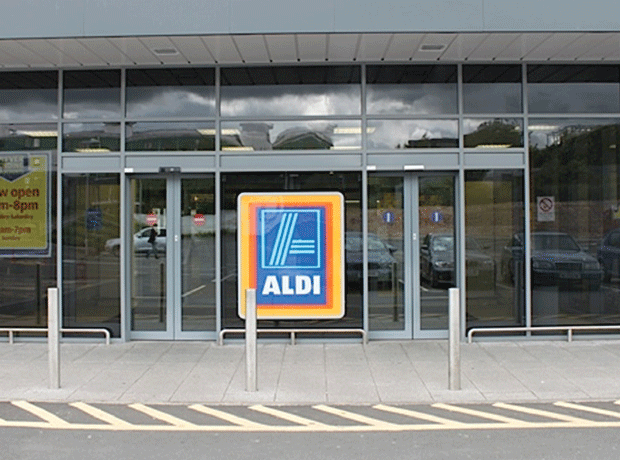

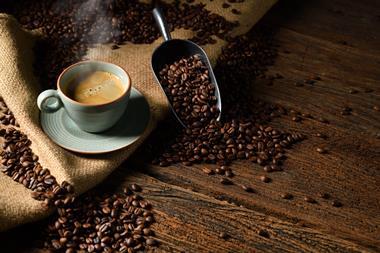
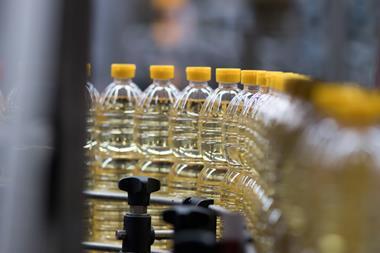
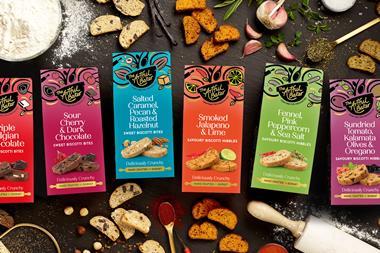
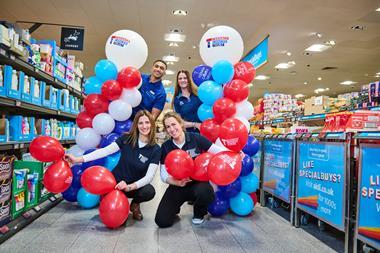
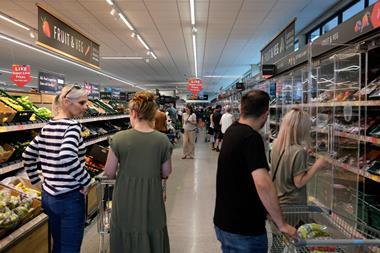
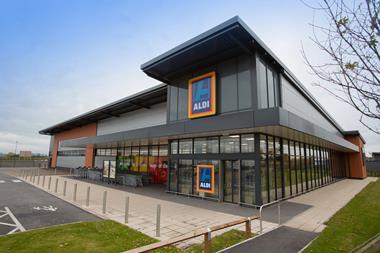
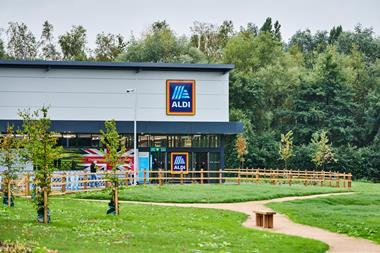


No comments yet